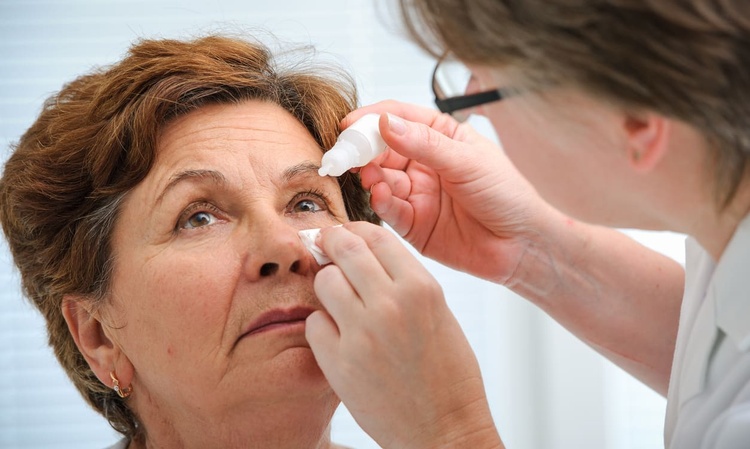Macular Degeneration Explained: Causes, Signs, Treatments
Macular degeneration affects the central retina and can gradually erode sharp vision, making tasks like reading, driving, and recognizing faces harder. Learn about common causes, warning signs, diagnosis methods, treatment choices such as anti-VEGF and AREDS supplements, and practical steps to help protect your sight.

Macular degeneration is a progressive eye condition that damages the macula—the small central part of the retina responsible for fine detail and color perception. While it rarely causes complete blindness, it can significantly reduce central vision and interfere with everyday tasks. Understanding risk factors, early symptoms, diagnostic tools, and available treatments helps people protect their sight and seek timely care.
What causes macular degeneration and who is at risk?
Age-related macular degeneration (AMD) is most strongly associated with growing older, particularly after age 50. Genetics also play an important role: a family history of AMD increases the likelihood of developing the disease. Other contributors include lifestyle and health factors that affect vascular health and oxidative stress.
Common risk factors:
- Older age (especially over 50)
- Family history and genetic predisposition
- Smoking
- Obesity and sedentary lifestyle
- High blood pressure (hypertension)
- High cholesterol and cardiovascular disease
- Long-term sun exposure without protection
- Light-colored eyes, which may be more susceptible to light damage
- Diets low in antioxidants and omega-3 fatty acids
Although you cannot change your age or genes, many of the other risk factors are modifiable. Addressing smoking, diet, exercise, and cardiovascular health can help reduce risk or slow progression.
What signs and symptoms should you watch for?
Early AMD often causes no obvious symptoms, which is why routine eye exams are essential. When symptoms do appear, they usually affect central vision rather than peripheral vision.
Common symptoms include:
- Blurred or fuzzy central vision
- Difficulty recognizing faces or reading fine print
- Straight lines appearing wavy or distorted (metamorphopsia)
- Dark, blurred, or empty areas in the center of vision
- Colors seeming faded or less vivid
- Increased sensitivity to glare
- Trouble adapting to low light or moving between light and dark environments
Symptoms can develop slowly in the dry form of AMD or more suddenly with the wet form, which involves abnormal blood vessel growth and leakage.
How is macular degeneration diagnosed and monitored?
A comprehensive eye examination by an optometrist or ophthalmologist is the first step. Early detection allows for closer monitoring and earlier intervention when appropriate.
Diagnostic tests commonly used:
- Visual acuity test to measure clarity of vision
- Dilated retinal examination to inspect the macula and retina
- Amsler grid test to detect distortion or blind spots
- Optical coherence tomography (OCT) to create cross-sectional images of retinal layers
- Fluorescein angiography to visualize blood flow and leaking vessels in the retina
- Fundus autofluorescence imaging to assess retinal pigment changes
After diagnosis, regular follow-up visits help track progression and guide treatment decisions. Your eye care professional will recommend the monitoring frequency based on disease type and severity.
What treatment options are available?
There is no cure for AMD, but several therapies can slow progression, stabilize vision, or manage complications—especially for the wet form.
Treatment approaches:
- Anti-VEGF injections: Medications injected into the eye block vascular endothelial growth factor (VEGF), reducing abnormal blood vessel growth and leakage in wet AMD. These injections can preserve and sometimes improve vision.
- Photodynamic therapy (PDT): A light-activated drug is used alongside a low-power laser to target and close abnormal vessels in certain cases of wet AMD.
- Laser therapy: Conventional laser treatment can seal leaking vessels in selected situations, though it is less commonly used than anti-VEGF drugs.
- Nutritional supplements: Clinical trials (AREDS and AREDS2) showed that specific formulations containing vitamins C and E, zinc, copper, lutein, and zeaxanthin can slow progression in intermediate and some advanced cases of dry AMD. Supplements are not a cure but can be part of a management plan when recommended by an eye care professional.
- Lifestyle measures: Controlling modifiable risk factors—quitting smoking, eating a diet rich in leafy greens and oily fish, exercising, and protecting eyes from UV light—supports overall eye health and may slow disease progression.
- Low vision aids and rehabilitation: For people with persistent vision loss, devices such as magnifiers, specialized lighting, adaptive technology, and orientation training can help maintain independence and quality of life.
How to prevent or slow progression
While not all cases are preventable, proactive steps can reduce risk and slow AMD’s course:
- Stop smoking and avoid secondhand smoke
- Maintain a balanced diet rich in fruits, vegetables (especially dark leafy greens), and omega-3 sources like fish
- Exercise regularly and maintain a healthy weight
- Manage blood pressure and cholesterol through lifestyle and medication when needed
- Wear UV-blocking sunglasses and broad-brimmed hats when outdoors
- Have regular comprehensive eye exams—particularly if you are over 50 or have a family history of AMD
- Discuss AREDS or AREDS2 supplements with your eye care professional to determine whether they are appropriate for you
Early detection and timely care make a difference. If you notice any new distortion, central blur, or a sudden change in vision, contact your eye care provider promptly.
This article is for informational purposes only and should not be considered medical advice. Please consult a qualified healthcare professional for personalized guidance and treatment.






